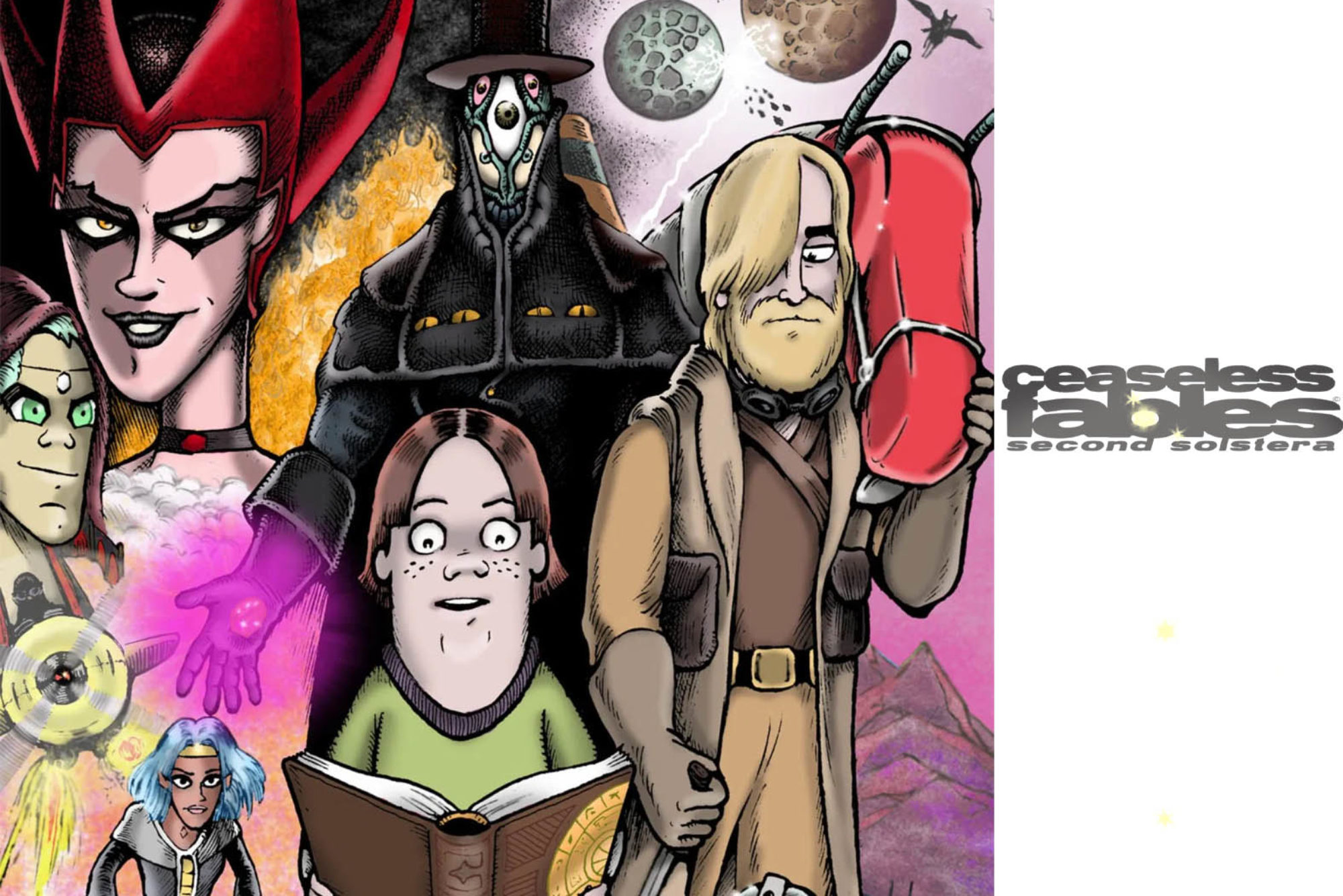On the Ceaseless Fables website and on the back of the Lost Book, you can see a badge reading “GENUINE GUARANTEED LABOR OF LOVE”. It’s not too hard to work out what that means, but let me explain it anyway.
1. The Ceaseless Fables of Beyonding strip and my 2008 movie, John’s Arm: Armageddon, were both created under the following philosophy; Do it like you’re being paid top dollar, even if you’re working for free. Worry about making a profit later. It’ll be a million times easier if the product already exists, especially if you’ve put your heart and soul into it. Especially if you went the extra mile.
2. Ceaseless Fables is created with love for the comic strip format, love for its own universe, and love for the audience. Even if only one person ever reads it, it is created with love for that one person. It doesn’t cheat the audience with irony, deceive the audience with an agenda, or manipulate the audience with fetishistic material. It is presented sincerely and as though it is important and loved by its readers.
3. If you put out love through your work, you will receive love in return. If that sounds corny or cliche to you, you may never understand it. The audience can tell if you’re faking it. If you can’t present your ideas sincerely (meaning, if you write in a “back door” that undermines the seriousness of the work, for example jokey dialogue in something non-comedic, or anything that breaks the narrative), your audience will turn on you.
4. Compare George Lucas’s Star Wars to what Disney has done with it. No matter what you think, Lucas put real love into his work, and Disney absolutely did not. By contrast, one work was celebrated for generations, and one was forgotten in months. There’s the difference. (Before you argue, Lucas began forming the Star Wars mythos in 1972. Solo, for free.)
5. Because I put real love into CFB, the characters speak and interact with sincerity and authenticity when I write them. I don’t have to force them into plots and situations; they organically arrive at those places. Their motivations are clear to me, and thus to the readers as well.
6. If you are contracted to create a work, when the money stops (and it will), you stop. The precedent has been established that payment must be rendered for the show to go on. This is fine for corporate IPs, but it also introduces the idea that you are not the only one who can do it. Even though The Simpsons is based on creator Matt Groening’s own family, as the past 20 years have shown, it can be written and drawn by virtually anybody, and so little love is put into it, the voices themselves can be easily replaced. South Park and Family Guy aren’t even that loveless and corporate. (Yet.)
7. Love is the single solitary thing automation and machines can’t replace, simulate or provide. For this reason alone, you must put it into your work. If you hesitate to do so because you fear criticism or rejection, then ignore those fears and double down. The presence of those fears is an indication that you are on the right path, and that what you offer the world is sincere and true.
8. Speaking of rejection; so what? When you put anything on the internet, the odds are overwhelming that it’ll be rejected. This has nothing to do with the quality of your work or your integrity. It’s because the opportunity exists to criticize you. 80 years ago, the biggest movie stars had minimal interaction with the public, if any. 60 years ago, the highest-grossing bands never communicated one-on-one with even their hardcore fans. Getting your letter printed in MAD magazine was about the best a regular person could hope for. Maybe an anecdote in Readers’ Digest. That was literally it. Instant contact between creator and audience is a purely 21st century privilege.
9. On that note: if your goal in putting your work online is to get people to like you, expect to be disappointed. Stay true to yourself. Money and fame will come later, once you’ve earned them. Only then will they mean anything to you.
10. Above all, remember the love.
